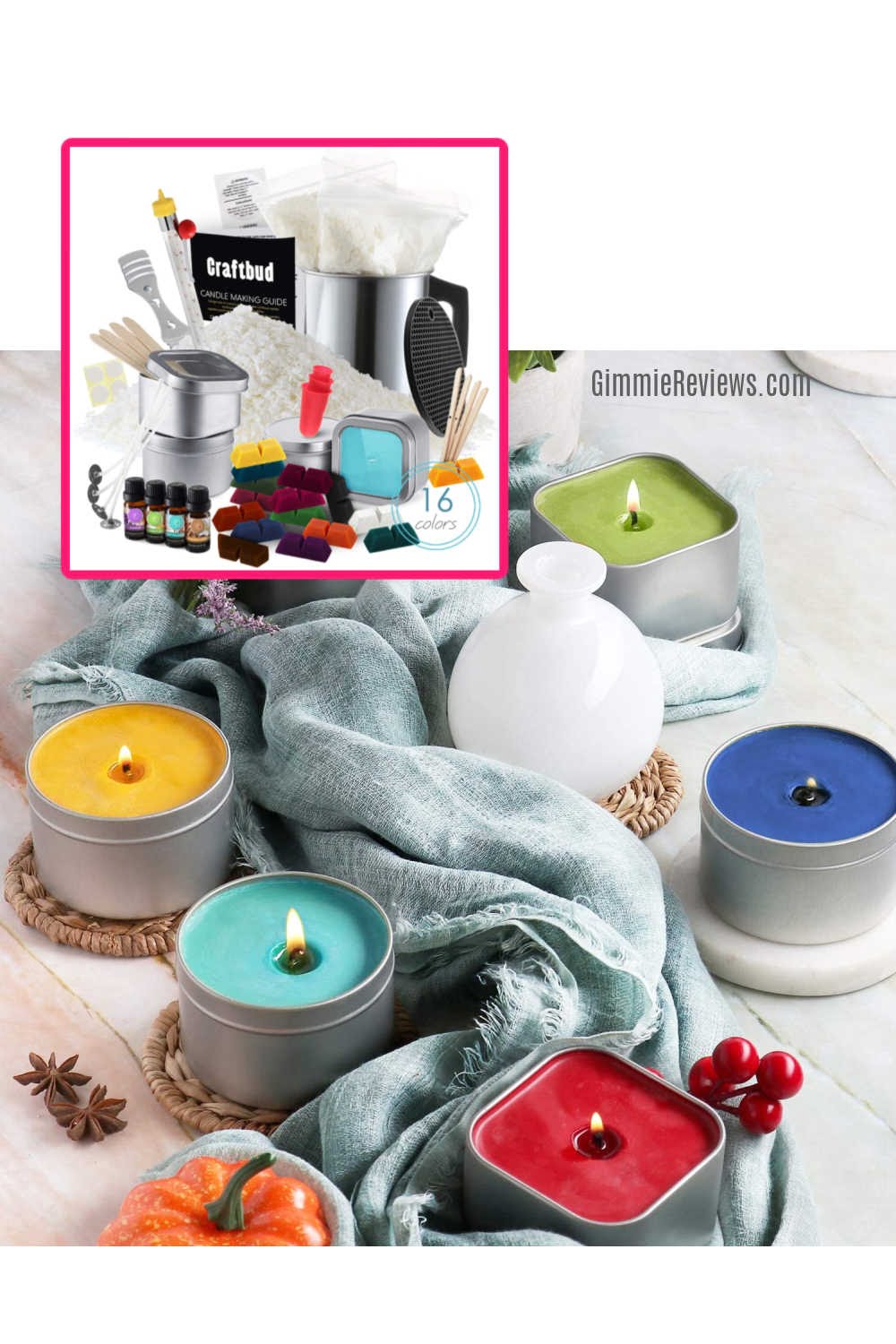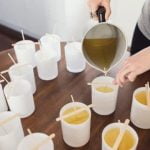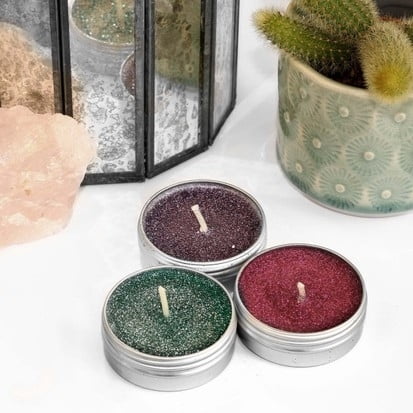Rendered fat has been used for centuries in various applications, from cooking to skincare, but did you know that it can also be used in candle making? In this article, we will explore the world of rendered fat and its role in creating unique and sustainable candles. We will delve into the definition and process of rendering fat, as well as discuss the various types of animal fats that can be used for candle making.
Rendering fat involves melting down animal fats to separate the solids from the liquid. This process not only allows for the removal of impurities but also transforms the fat into a versatile material that can be used for various purposes. When it comes to candle making, different types of rendered fats can produce different results, each with its own set of advantages and characteristics.
The history of using rendered fat in candle making dates back to early civilizations. Before electricity was discovered, people relied on burning animal fats as a source of light. Over time, candle making techniques and materials evolved, but rendered fat continued to be a popular choice due to its availability and affordability. Today, it is not only a practical option but also an environmentally sustainable alternative compared to other candle wax options.
Join us as we embark on a journey through the fascinating world of rendered fat candles. In the following sections, we will explore everything from sourcing high-quality rendered fat and refining it for candle making purposes to techniques, tips, and safety considerations.
We will also delve into different styles and designs that you can create using rendered fat wax. So get ready to discover the unique qualities and benefits offered by rendered fat candles while finding inspiration along the way.
What is Rendered Fat?
Rendered fat is a key ingredient in candle making and has been used for centuries to create beautiful and functional candles. This section will provide an overview of what rendered fat is, the process of rendering fat, and the various types of animal fats that are commonly used in candle making.
Definition and Process of Rendering Fat:
Rendering fat involves heating animal fats until they melt down into a liquid form that can be used as a wax base for candles. The process typically involves simmering or melting the fat at a low temperature, then straining out any impurities or solid particles. This results in a smooth, clear liquid wax that can be poured into molds or containers to create candles.
Various Types of Animal Fats Used for Candle Making:
There are several types of animal fats that can be rendered and used for candle making. Some common examples include tallow (beef or mutton fat), lard (pork fat), and poultry fats. Each type of fat has its own unique characteristics that can affect the final look and performance of the candles. For example, tallow candles tend to have a higher melting point and produce a brighter flame, while lard candles have a softer texture and burn more slowly.
| Types of Animal Fats | Characteristics |
|---|---|
| Tallow | Higher melting point, bright flame |
| Lard | Softer texture, slower burn |
| Poultry Fats | Versatile for different candle types |
Overall, rendered fat provides a natural and sustainable option for candle making. Its use dates back to early civilizations, when animal fats were relied upon for lighting. The next section will delve into the history of rendered fat in candle making and how it has evolved over time.
History of Rendered Fat in Candle Making
In the history of candle making, rendered fat has played a significant role as a primary ingredient for lighting. Dating back to early civilizations, animal fats were commonly used as a source of light. This practice can be traced back to ancient Egypt, where tallow was extracted from various animals and used in torches and simple wick candles.
As the art of candle making evolved over time, so did the techniques and materials used. In the Middle Ages, beeswax became popular as an alternative to animal fats due to its clean-burning properties and pleasant aroma. However, rendered fat remained a viable option for those who couldn’t afford the higher cost of beeswax.
During the Industrial Revolution, there was renewed interest in rendered fat as new technologies enabled more efficient rendering processes. Additionally, the discovery of petroleum-based paraffin wax in the mid-19th century further revolutionized candle making. Although paraffin wax quickly gained popularity due to its affordability and ease of use, rendered fat continued to have its place in more traditional candle making practices.
Today, while there are numerous wax options available for candle making, many artisans still appreciate the historical significance and unique qualities that rendered fat brings to their creations. It offers a connection to our past and adds a touch of nostalgia to candle-making traditions. By using rendered fat, crafters can honor ancient techniques while creating distinctive candles with their own personal touch.
Furthermore, using rendered fat for candle making aligns with modern environmental sustainability goals. Rendered fat is a renewable resource that can be sourced locally from farms and butchers as a byproduct of meat processing. By repurposing this material into candles instead of it going to waste or being discarded, crafters contribute to reducing waste and embracing a more eco-friendly approach.
Overall, understanding the historical context of rendered fat’s role in candle making allows us to appreciate its significance and rediscover its potential as both an environmentally sustainable option for candle wax and a way to create unique, handcrafted candles. Through experimentation and exploration, artisans can find inspiration in history while infusing their modern creations with the warmth and charm of rendered fat.
Advantages of Using Rendered Fat for Candle Making
Rendered fat has been used for candle making for centuries and offers several advantages compared to other candle wax options. In this section, we will explore the environmental sustainability of rendered fat candles as well as the unique characteristics and benefits they possess.
Environmental Sustainability
One of the main advantages of using rendered fat for candle making is its environmental sustainability. Unlike petroleum-based waxes or other synthetic candle materials, rendered fat is a renewable resource that comes from animal by-products. By using this material, candle makers can contribute to reducing waste and promoting a more sustainable approach to crafting candles.
Additionally, rendering fat does not require harmful chemicals or complex refining processes, which makes it an eco-friendly choice. The natural decomposition process of animal fats ensures minimal environmental impact compared to the production and disposal of synthetic candle materials.
Unique Characteristics and Benefits
Rendered fat candles also have unique characteristics that set them apart from other types of candles. For starters, they have a subtle, warm scent that adds an inviting ambiance to any space. Depending on the type of animal fat used, these candles may have different aromas such as beef tallow providing a mild sweetness or lard offering a clean and neutral scent.
Another benefit is that rendered fat candles have a lower melting point than some other waxes, which results in a longer burning time. This means that you can enjoy your rendered fat candle for extended periods before needing to replace it. Additionally, these candles tend to produce less soot and smoke when burned properly, creating a cleaner burn for healthier air quality.
Moreover, rendered fat candles offer versatility in terms of color customization. Natural animal fats can be easily blended with pigments or dyes to create various shades and hues suitable for different moods or aesthetics.
By harnessing the advantages presented by rendered fat in candle making, crafters can create beautiful and sustainable products while enjoying the unique qualities that these candles offer. In the next section, we will delve into the process of sourcing and processing rendered fat for candle making.
Harvesting and Processing Rendered Fat for Candle Making
Rendering fat is the process of melting animal fat to separate the solids from the liquid fat. This rendered fat is then used in various industries, including candle making. In this section, we will explore the sources of high-quality rendered fat and the steps involved in processing it for candle making.
Sources and Obtaining High-Quality Rendered Fat
Rendered fat can be obtained from various animal sources, including beef, pork, sheep, and poultry. It is important to source high-quality rendered fat for candle making to ensure a clean and reliable burning experience. One way to obtain high-quality rendered fat is by collaborating with local farmers or butchers who have access to organic and sustainably raised animals.
When acquiring rendered fat, consider its purity and consistency. The best-rendered fats are usually clean, odorless, and free from any extraneous substances that may affect candle performance. By establishing a good relationship with suppliers who prioritize quality rendering methods, you can secure a reliable source of high-quality rendered fat for your candle-making endeavors.
Steps Involved in Refining Rendered Fat for Candle Making
Once you have obtained the rendered fat, it needs to be refined before it can be used in candle making. The refining process helps remove any impurities or solids present in the fat while improving its overall quality. Below are some essential steps involved in refining rendered fat for candle making:
- Filtering: Start by filtering the warm liquid rendered fat through cheesecloth or a fine mesh strainer to remove any larger particles or debris.
- Cooling: Allow the filtered melted fat to cool down slowly until it solidifies into a creamy white texture. This cooling process helps separate any remaining impurities.
- Re-melting: Once cooled and solidified, gently re-melt the solidified rendered fat using a double boiler method or microwave until it becomes a clear liquid.
- Decanting: Carefully pour the liquid fat into clean containers, leaving behind any sediment or impurities at the bottom. Repeat this process if necessary to remove any remaining particles.
By following these steps, you can refine the rendered fat and prepare it for use in candle making. The refined fat will ensure better burning properties and enhance the overall quality of your candles.
Techniques and Tips for Using Rendered Fat in Candle Making
Using rendered fat as a candle wax material opens up a world of possibilities for unique and sustainable candle creations. However, it’s important to understand the proper techniques and tips for working with rendered fat in candle making to achieve optimal results.
One technique for using rendered fat in candle making is blending it with other candle wax materials. This can help improve the burn quality and reduce any potential issues such as uneven melting or excessive smoke. Experimenting with different ratios of rendered fat to other waxes (such as soy or beeswax) can help achieve the desired characteristics in the final candle. It’s recommended to start with a small test batch before scaling up.
Temperature is another crucial factor when working with rendered fat in candle making. It’s important to melt the fat at a low temperature to ensure that it doesn’t break down or lose its unique qualities. Once melted, it should be poured into the chosen mold or container at the appropriate temperature for optimal curing and setting.
When pouring candles using rendered fat, there are a few pouring techniques that can be beneficial. One popular method is called double-pouring, where layers of different colored or scented rendered fat wax are poured one after another, allowing each layer to cool before adding the next. This creates beautiful layered candles with unique visual effects.
To ensure safety and avoid any accidents while working with rendered fat, it’s essential to follow proper guidelines and precautions. When handling and storing rendered fat, it should be kept in a cool and dry place away from open flames or heat sources. It’s also recommended to wear protective gloves when handling hot wax.
When burning a rendered fat candle, it’s crucial to practice proper candle burning practices. This includes trimming the wick before each use to avoid excessive smoking or flickering, placing the candle on a heat-resistant surface, and keeping it away from drafts or flammable materials.
By following these techniques and tips for using rendered fat in candle making, you can create unique and environmentally sustainable candles that not only add ambiance to any space but also tell a story through their connection with history and craftsmanship.
Exploring Different Candle Styles and Designs Using Rendered Fat
Candle-making allows for endless creativity and exploration, especially when using unique materials like rendered fat. Rendered fat candles can be made in various styles and designs, offering a wide range of options for those seeking to create one-of-a-kind candles.
One popular style of rendered fat candles is molded candles. Molded candles are created by pouring melted rendered fat into specially designed molds, allowing them to take on intricate shapes and patterns. These molds can be found in various sizes and designs, from simple geometric shapes to detailed figurines. The versatility of rendered fat as a wax allows for crisp details and clean lines in these molded candles.
Another popular option for exploring different candle styles with rendered fat is container candles. These candles are made by pouring the melted rendered fat into containers, such as glass jars or ceramic pots, which not only act as holders but also enhance the aesthetics of the candle. Container candles with rendered fat wax offer a more modern and sleek look compared to traditional tapers or pillar candles.
In addition to molded and container candles, there are endless possibilities for other creative designs using rendered fat. For example, layering different colored waxes derived from different animals can create captivating patterns within a single candle. Embedding decorative elements such as dried flowers or herbs into the melted rendered fat before it solidifies is another way to add uniqueness and visual interest to the final product.
Overall, exploring different candle styles and designs using rendered fat provides an opportunity for candle makers to showcase their creativity and produce truly exceptional pieces. Whether it’s through molded candles, container candles, or experimenting with various decorative elements, working with rendered fat opens doors to limitless possibilities in candle design.
Safety Guidelines and Considerations for Working with Rendered Fat
When working with rendered fat for candle making, it is important to prioritize safety and take certain precautions to ensure a safe and smooth process. This section will provide some guidelines and considerations to keep in mind when working with rendered fat.
Precautions for handling and storing rendered fat
1. Use proper protective gear: When handling rendered fat, especially if it’s still hot or melted, make sure to wear heat-resistant gloves or mitts to prevent burns.
2. Work in a well-ventilated area: Rendering fat can produce strong odors, so it is essential to work in a space with good ventilation to minimize exposure.
3. Avoid contact with eyes and skin: Rendered fat can cause irritation if it comes into contact with your skin or eyes. Therefore, always exercise caution and wear protective goggles or glasses when working with it.
4. Store rendered fat properly: To prevent spoilage and maintain its quality, store the rendered fat in a cool, dry place away from direct sunlight.
Proper candle burning practices
1. Trim the wick: Before lighting the rendered fat candle, make sure to trim the wick to approximately ¼ inch. This will help control the flame height and reduce the risk of smoking or soot buildup.
2. Ensure stability: When placing a rendered fat candle in a holder or container, ensure that it is stable and won’t tip over during use.
3. Never leave candles unattended: It’s crucial never to leave your candles burning unattended as this poses a significant fire hazard. Make sure they are extinguished before leaving the room or going to sleep.
4. Keep away from flammable materials: Always place candles on heat-resistant surfaces away from flammable objects such as curtains, papers, or fabrics.
By following these safety guidelines and recommendations when working with rendered fat for candle making, you can ensure a safer and more enjoyable crafting process. Remember that safety should always be a priority, allowing you to create beautiful candles while minimizing the risks associated with working with rendered fat.
Conclusion and Inspiration
In conclusion, the use of rendered fat in candle making offers a multitude of benefits and unique qualities. Not only is it an environmentally sustainable option compared to other candle wax materials, but it also provides distinct characteristics that enhance the beauty and functionality of candles.
Rendered fat candles have a rich history in lighting, dating back to early civilizations who utilized animal fats for illumination. Over time, techniques and materials evolved, leading to the modern practice of using rendered fat in candle making.
Working with rendered fat requires careful harvesting and processing to obtain high-quality wax. By blending it with other candle wax materials, optimal results can be achieved. It is crucial to follow recommended temperature guidelines and pouring techniques during the candle-making process.
The possibilities for exploring different candle styles and designs using rendered fat are endless. Molded candles can be created using various molds, resulting in unique shapes and patterns. Container candles made with rendered fat wax offer both functionality and aesthetic appeal.
However, safety considerations should not be overlooked when working with rendered fat. Proper handling and storage of the material are necessary to ensure safe practices. When burning rendered fat candles, it is important to follow proper candle burning practices to avoid accidents or injury.
In conclusion, the benefits and unique qualities offered by rendered fat candles make them an enticing choice for candle makers. The rich history of using animal fats for lighting serves as inspiration to explore this traditional method further. So why not embrace creativity, experiment with different techniques, and create your own stunning creations with rendered fat? Let your imagination run wild as you bring light into any space with these distinctive candles.

Welcome to my candle making blog! In this blog, I will be sharing my tips and tricks for making candles. I will also be sharing some of my favorite recipes.





